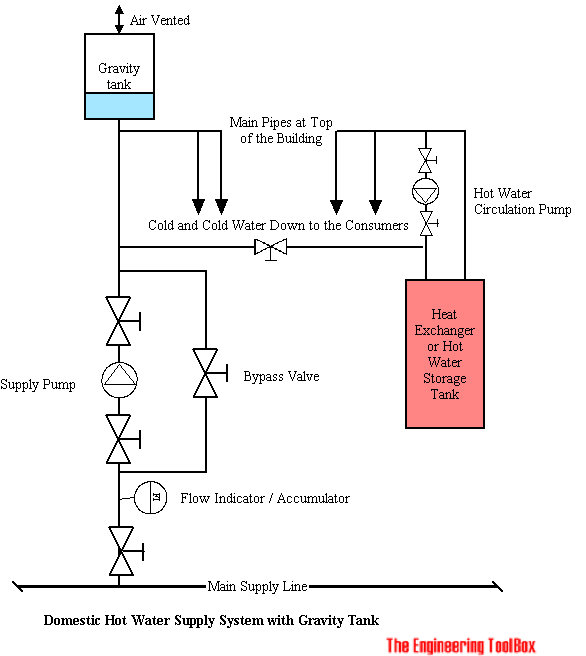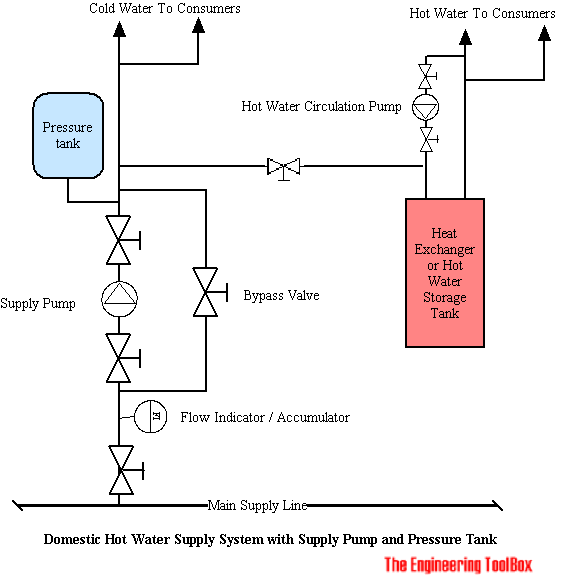Domestic Service Water Supply Systems
Introduction to general design of domestic service water supply systems - with pressurized or gravity tanks.
The purpose with a domestic service water supply system is to provide consumers with enough hot and cold water.
In old buildings it is common with gravity storage tanks on the top floor of the building. More commonly used in new systems are pressurized tanks and supply pumps.
Domestic Water Supply with Gravity Tank
Domestic water supply system with gravity tank:

For proper operation of the system the gravity tank is located at least 30 ft or 10 m above the highest outlet or consumer. In taller buildings pressure reducing valves are required in the lowest floors before the fittings.
The volume of a gravity tank must be designed to compensate for limited capacity of a supply line. The tank fills up when the consumption of hot and cold water is lower than the capacity of the supply line - and the tank is emptied when the consumption is higher than the capacity of the supply line.
A drawback with the open gravity tank on the top floor is the potential danger of freezing during winter conditions. Huge tanks will also influence on the construction of the building.
Domestic Water Supply with a Pressurized Tank
Domestic water supply system with pressurized tank:

The pressurized tank is partly filled with air (or gas) behind a membrane. The air compensates for pressure variations during consumption and when supply pump starts and stops.
A pressurized tank has a limited compensating capacity for the shortage in a main supply line.
Estimating Required Buffer Tank Capacity
You are free to use the template bellow as a tool to estimate required buffer capacity in a water supply system. Log in to your Google Account to make your own copy to modify of the template. Alternatively - you can also save the Google Spreadsheet to your computer as a xls file.



